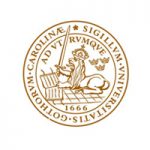项目介绍
A Flexible, Interdisciplinary Curriculum
The Ph.D. program in the graduate field of Applied Physics is a research-oriented doctoral program tailored to individual interests. The program combines a core physics curriculum with research and study in one of several areas that deal either with the application of physics to a technical discipline or with the interface between physics and another area of science. Students who have majored in physics, in another physical science (for example, chemistry), or in an engineering field are eligible for the program.
The program is designed so that students can evaluate the many different research opportunities available before deciding on an area of specialization. Although most students join the research group of a faculty member in the graduate field of applied physics students may also join a group outside applied physics—a reflection of the tremendous flexibility offered to our graduate students—and begin their thesis research by the end of the first academic year. Most students complete the program under their original faculty supervisor, but if a student should decide to change research groups, the decision is subject only to the agreement of a new thesis supervisor.
Students in applied physics may pursue thesis research in any one of several broad areas, including nanoscience, condensed matter physics and materials science, optical physics, quantum electronics and photonics, biological physics, astrophysics and plasma physics, or atomic, molecular, and chemical physics.
Faculty
There are 19 faculty members in AEP as well as nearly thirty other faculty members representing ten different departments outside the school which comprise the applied physics field faculty. This large faculty, engaged in many research projects with federal, state, or corporate sponsors, makes it possible for applied physics students to choose thesis research topics from many different areas. While each student becomes an individual investigator responsible for an independent research project, interactive and collaborative research programs and shared research facilities are hallmarks of advanced study at Cornell. The majority of the faculty members in the field participate in one or more of Cornell’s numerous research centers and programs, and most graduate students in applied physics make extensive use of the research facilities maintained by these centers.
Special Committee
Students entering the Applied Physics program begin by taking courses that will meet core requirements. During the first year of study, students choose a major area within applied physics for study and thesis research and a minor area of study that is outside the field of physics or applied physics. Students then choose a special committee of three or four faculty members who will supervise their graduate program and monitor the progress of their thesis research. Ultimately, this faculty committee also approves a student’s thesis. Generally, the chair of the committee is the supervisor of the student’s thesis project, the second member is from the student’s major area of study in applied physics, and the third member represents the minor area of study (as does the optional fourth member). With guidance from this faculty committee, the student plans an individualized course of study that will fulfill the core curriculum and minor subject requirements and will provide the groundwork for full-time thesis research in a particular area of specialization.
相关项目推荐
KD博士实时收录全球顶尖院校的博士项目,总有一个项目等着你!






